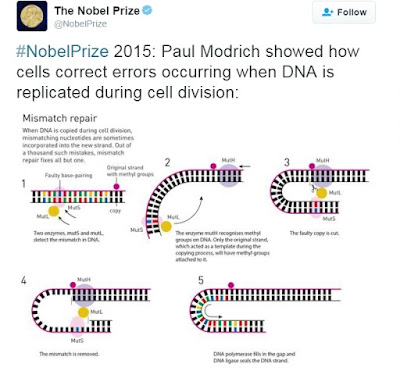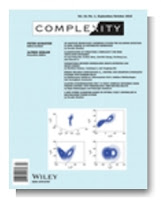As I was getting closer and closer to my goal of 101 Proofs for God, I began thinking a lot about what should be the concluding Proof for God, number 101. I wanted it to be a more universal one, something more of the heart than the head.
I thought about “good and evil” and “morality” which have been classic proofs for God because they cannot originate inside of the materialistic world. I thought about “free will” and “faith” because those are very real things, but they are definitely not of this material world. No materialistic explanation of our existence (i.e. evolution) can explain their existence.
As I sat down and prayed about it, “The Messiah” came to my mind. That was very satisfying and totally appropriate. After all, what’s life and proofs for God all about right now anyway?
The Messiah is the essential crux of human history. For believers, this one person, Jesus of Nazareth, leads us to being able to explain who is God, how the world got messed up, what the solution is, and what kind of world we should be looking forward to.
Just think about the effect that one almost totally obscure man has had on the world since he lived. He lived in a pretty obscure, little country for only 33 years and shared his ideas for only three years. Not only has he had an effect on billions of people for the last 2,000 years, but even today there are billions of people being affected by his life. His ideas affected the founding of our nation, its constitution, and government. Freedom and responsibility have led to the greatest advances in science, medicine, technology, art, and commerce that the world has ever seen.
How do you explain that type of phenomenon from three years of a man’s life? He was tapping into something way beyond ordinary lives. Something very supernatural must be going on.
Now, I’m not going to try to convert anybody to anything here. I just want to put forth some facts that might bring a new perspective or two for you.
Let’s take a look at the Bible from the perspective of it being just a book and compare it to other books. The Bible is the bestselling book of all time with over 5 billion sold. (To be accurate, Quotations from Chairman Mao claims over 6 billion in print, but does not claim they were all purchased. Also, the Qur'an claims billions, but there are not enough accurate records.) [1]
The next best seller at 150 million is Lord of the Rings. [2] The Bible outsells it by 30 to 1.
Back in 2001, records show the number of new Bibles distributed (sold or given away) in the United States was about 168,000 per day. [3]
Could the Bible possibly be just a lie and really worthless to all those people? Are they really that stupid? Could they just be deluding themselves? Could they just be fantasizing their experiences with the God of the Bible?
There is totally overwhelming evidence that God really does exist everywhere you look. See 101 Proofs for God. Furthermore and most importantly, you can have a relationship with Him if you decide to. But there is the real catch, you have to decide to on your own.
Before this one I’ve put together 100 Proofs for God and if you read all of those and are still not sure if God exists or not, your next step actually is to take a “leap of faith”. There’s plenty more I could write about. I could keep going for another 40 years and get up to 1001 Proofs for God.
However, faith in God is actually a gift that comes to you once you accept that God exists and decide to believe in Him. Only after you have received the gift of faith, then you start to build your relationship with God. That’s the place you want to get to. That’s the part that is wonderful. That’s the goal.
Think of people like St. Francis of Assisi or Mother Teresa. They had an amazing personal relationship with Jesus. They had many deep experiences with him as have millions of others down through the years. As you probably know, St. Francis was the first to receive the stigmata, where the palms of his hands, his feet, and his side shed blood in the same place as Jesus’ crucifixion. It lasted for two years prior to his death. [4] The stigmata came upon him during a 40-Day fast when he was 43 years old.
This paragraph is from his biographer.
“His wrists and feet seemed to be pierced by nails, with the heads of the nails appearing on his wrists and on the upper sides of his feet, the points appearing on the other side. The marks were round on the palm of each hand but elongated on the other side, and small pieces of flesh jutting out from the rest took on the appearance of the nail-ends, bent and driven back. In the same way the marks of nails were impressed on his feet and projected beyond the rest of the flesh. Moreover, his right side had a large wound as if it had been pierced with a spear, and it often bled so that his tunic and trousers were soaked with his sacred blood." [5]
Many people have received stigmata over the years. But modern science cannot explain it. So what do they conclude?
Some modern research has indicated stigmata are of hysterical origin, or linked to dissociative identity disorders, especially the link between dietary constriction by self-starvation, dissociative mental states and self-mutilation, in the context of a religious belief. [6]
In essence, they are crazy people. Is that what you want to believe about St. Francis? How about Mother Teresa? You’d have to be a crazy person to spend your life among lepers like she did, right?
Some people may say that the historical Jesus did not exist. (That might be an even better proof for God if somehow all the miracles for 2,000 years have been done by God without an earthly Jesus.) But he actually did exist. The evidence for his life is far more substantial than evidence for other ancient figures that everybody accepts as having existed without doubt, e.g. Socrates, Plato, Aristotle, Homer, and others.
Go to this type of resource for a thorough analysis of proof for Jesus: Is The New Testament Reliable As An Historical Record? [7] It lays out three tests to apply to historical documents: (1) The Bibliographical test, (2) The Internal evidence test, and (3) The External evidence test. The life and teachings of Jesus of Nazareth pass with high flying colors.
There are some 24,000 copies of the New Testament in existence (5,600 in Greek, 10,000 in Latin, and 9,000 in other languages from wide ranges all over the Middle East.) This compares to “The Iliad” by Homer which is in second place with 643 copies. [8] There are about 250 known manuscripts for Plato. [9]
“We have 114 fragments of the New Testament dating back to 50-100 A.D., and 5366 Greek copies of parts of the New Testament, and over 19,000 manuscripts in other languages, including 250 books containing most of the N.T and 325 complete New Testaments within 225 years of their writing and less than 300 years from Christ’s Resurrection.” [10]
A surprisingly huge number of the New Testament fragments and copies are very close in time frame to their original documents, increasing the likelihood that they are accurate. But for Plato who lived around 400BC, we do not have any copy of his work that was made until 1200 to 1300 years later. So there could be a lot of errors in the copy. For Homer, our existing copies were made 500 years after his originals.
Further evidence for the real life of Jesus is that many people living at his time or shortly thereafter wrote about him and his followers and the New Testament. Writings of later church fathers contain 19,368 citations referring to texts from just the Four Gospels alone.[11]
Another point is, “What’s the whole big deal about a Messiah, anyway?” For non-believers, Jesus is not a big deal. However, people with a religious inclination know in their hearts there is something wrong with this world. Human nature has good and evil. It’s different when compared to the harmony in all of Nature. Somehow we are separated from the goodness and happiness that we long for in our hearts. If there is a Messiah, a person who saves us from this situation, then there is an explanation for our plight and a solution to return to the original ideal. There is hope. Also, the existence of the Messiah is proof there is a God acting behind the scenes who loves us and sends the Messiah for us.
There could never be The Messiah if there were no God. In fact, The Messiah necessitates a loving, long-suffering God who is trying to bring home His “lost sheep”, His lost children. That is exactly the Heavenly Father that Jesus taught us about. No one else in history taught us that God is our Heavenly Father and forgives us.
Certainly, Jesus believed in God. If there ever was an “expert” that we could trust, he’s the one. Maybe you think that you know “the truth” better than anyone else. If that were true, then we should call you “god”, shouldn’t we?
One day everyone will find the truth, whether it is in this life or the next. Deep inside every person is the inerasable quest for truth. That is the guarantee that we will all keep searching until we find our source.
There must be God.
_________________________________________________________
[11] “Manuscript Evidence for the Bible: An Outline”, http://www.faithfacts.org/search-for-truth/maps/manuscript-evidence



















